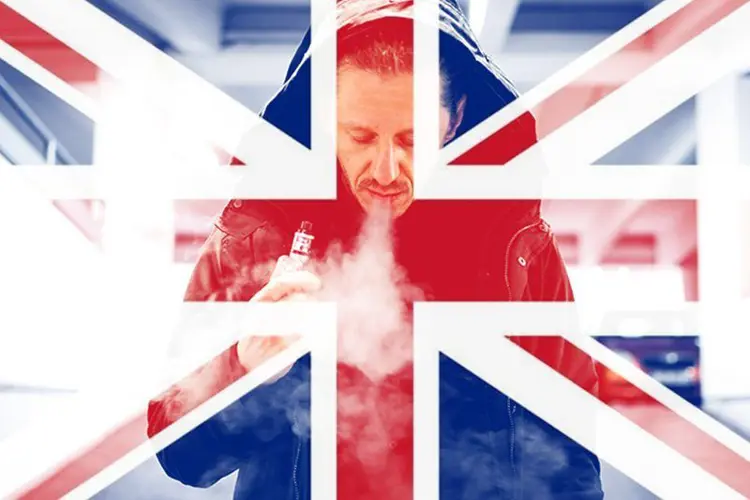Once again, public health authorities in the United States and the United Kingdom are looking at the same information on e-cigarettes and vaping, but seeing two different things. And, as usual, it’s the British researchers who see mostly benefits.
Less than two weeks ago, the U.S. National Academies of Sciences, Engineering, and Medicine issued a 600-page report that grudgingly admitted vaping is safer than smoking — and then went on to focus on a supposedly proven gateway from teen vaping to smoking.
But the new e-cigarette report from Public Health England (PHE) says that the gateway evidence for British teens is poor, and goes on to suggest that the evidence is equally inconclusive in North America — practically trolling the American authors.
“Although these surveys in Canada and the US cannot be directly compared with data from the UK, they suggest similar patterns,” says the PHE report. “First, that ever or recently using an EC [e-cigarette] is not unusual among young people overall. However, both ever and recent use is far more common among young people who smoke than young people who have never smoked.”
“Concern has been expressed that e-cigarette use will lead young people into smoking,” Prof. Linda Bauld, author and Professor of Health Policy, University of Stirling, said in the PHE press release. “But in the UK, research clearly shows that regular use of e-cigarettes among young people who have never smoked remains negligible, less than 1%, and youth smoking continues to decline at an encouraging rate.”
The first PHE report became the trump card thrown on the table to end arguments with vaping skeptics.
That’s just a small part of the 243-page report, which lays out evidence on e-cigarettes that has emerged since PHE’s last look at the subject in 2015. The report also briefly addresses evidence on heat-not-burn tobacco products.
“Based on current knowledge,” the report concludes, “stating that vaping is at least 95% less harmful than smoking remains a good way to communicate the large difference in relative risk unambiguously so that more smokers are encouraged to make the switch from smoking to vaping.”
Key findings in the new PHE report include:
- “Vaping poses only a small fraction of the risks of smoking and switching completely from smoking to vaping conveys substantial health benefits;
- “E-cigarettes could be contributing to at least 20,000 successful new quits [in the U.K.] per year and possibly many more;
- “E-cigarette use is associated with improved quit success rates over the last year and an accelerated drop in smoking rates across the country;
- “Many thousands of smokers incorrectly believe that vaping is as harmful as smoking; around 40% of smokers have not even tried an e-cigarette;
- “There is much public misunderstanding about nicotine. Less than 10% of adults understand that most of the harms to health from smoking are not caused by nicotine;
- “The use of e-cigarettes in the UK has plateaued over the last few years at just under 3 million;
- “The evidence does not support the concern that e-cigarettes are a route into smoking among young people. Youth smoking rates in the UK continue to decline. Regular use is rare and is almost entirely confined to those who have smoked.”
Notably, the report includes a section on misreporting of scientific studies that calls out both academics and the news media for irresponsibly frightening smokers away from e-cigarettes.
“Our new review reinforces the finding that vaping is a fraction of the risk of smoking, at least 95% less harmful, and of negligible risk to bystanders,” said Prof. John Newton, Director for Health Improvement at PHE, in the press release.
“Yet over half of smokers either falsely believe that vaping is as harmful as smoking or just don’t know,” he added. “It would be tragic if thousands of smokers who could quit with the help of an e-cigarette are being put off due to false fears about their safety.”
The new report also summarizes existing evidence on heat-not-burn (HNB) tobacco products. The PHE authors refer to HNB as “tobacco heating products,” a term also used by some of the manufacturers. Some HNB products, including Philip Morris’ IQOS, are already available in the U.K.
PHE takes a cautious approach on HNB products, noting that they “may be considerably less harmful than tobacco cigarettes and more harmful than e-cigarettes.”
The authors are among the most respected smoking, nicotine, and addiction researchers in the world.
The new report is titled, “Evidence review of e-cigarettes and heated tobacco products. A report commissioned by Public Health England.” The primary authors are Ann McNeill, Leonie S Brose, Robert Calder, Linda Bauld, and Debbie Robson.
Four of the primary authors are on the faculty of King’s College London, and four are affiliated with the UK Centre for Tobacco & Alcohol Studies (UKCTAS).
Nine others contributed to individual chapters of the report, including John Britton, Jamie Brown, Peter Hajek, Lion Shahab, and Robert West. The authors are among the most respected smoking, nicotine, and addiction researchers in the world.
The first PHE report led directly to the vape-positive environment we now see in the U.K.
The original PHE vaping report, “E-cigarettes: an evidence update,” arrived in the summer of 2015, and immediately caused a worldwide stir. It’s conclusion that vaping is “around 95 percent safer” than smoking became a mantra for vaping advocates. The first PHE report became the trump card thrown on the table to end arguments with vaping skeptics.
Vapers were relieved and thrilled to finally have backing from a major government’s public health establishment. But vaping haters made the report a target, calling the “95 percent safer” number arbitrary and accusing PHE of pulling it from thin air, although the PHE authors had already explained the number’s origin.
The first PHE report led directly to the vape-positive environment we now see in the U.K. The 2015 PHE report was followed less than a year later by the even more comprehensive one from the Royal College of Physicians. And last year, in England, vaping for the first time became part of a major government’s official tobacco control plan.
The Freemax REXA PRO and REXA SMART are highly advanced pod vapes, offering seemingly endless features, beautiful touchscreens, and new DUOMAX pods.
The OXVA XLIM Pro 2 DNA is powered by a custom-made Evolv DNA chipset, offering a Replay function and dry hit protection. Read our review to find out more.
The SKE Bar is a 2 mL replaceable pod vape with a 500 mAh battery, a 1.2-ohm mesh coil, and 35 flavors to choose from in 2% nicotine.
Because of declining cigarette sales, state governments in the U.S. and countries around the world are looking to vapor products as a new source of tax revenue.
The legal age to buy e-cigarettes and other vaping products varies around the world. The United States recently changed the legal minimum sales age to 21.
A list of vaping product flavor bans and online sales bans in the United States, and sales and possession bans in other countries.


















